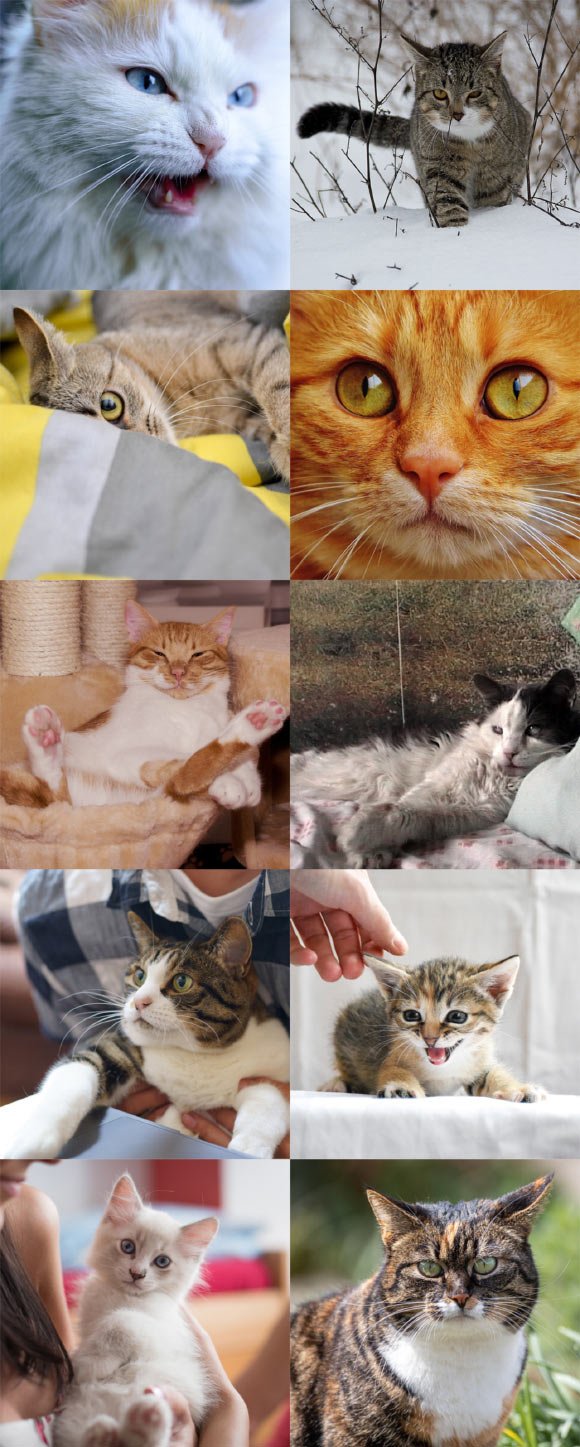People all around the world live with cats and cats engage in many social behaviors toward their owners. Olfaction is one of the most important sensory abilities in cats, yet its role in recognizing humans is unclear. In a new study, scientists at the Tokyo University of Agriculture assessed the role and characteristics of olfaction in the discrimination of known or unknown humans by domestic cats.

Miyairi et al. described the behavioral responses of Felis catus to human olfactory stimuli; they suggest that cats use their olfaction for the recognition of humans; in addition, they suggest that olfactory exploratory behavior in cats is related to personality features and that there is lateralization of the left and right nostrils in the detection of odors. Image credit: Sci.News / Makieni777 / Rise-a-mui / Alexas_Fotos / Dorothe / Vaclav Zavada / Artem Makarov / Daga Roszkowska / Birgit / Pasi Mammela.
“Dogs (Canis familiaris) and cats (Felis catus) are popular companion animals that engage in many social behaviors with their owners,” said study’s first author Dr. Yutaro Miyairi and colleagues.
“Previous studies have focused on the social relationships and behaviors of these animals with their owners.”
“For example, dogs can identify human emotional expressions from facial and vocal information, i.e., they can process social information from humans.”
“Cats also have remarkable social cognitive abilities, which are gaining the interest of researchers.”
“Studies of cat-human interactions are less advanced than such studies in dogs.”
In the study, the researchers investigated whether cats are able to distinguish between familiar and unfamiliar humans based on smell alone.
They tested thirty domestic cats by presenting them with plastic tubes containing swabs that had been rubbed under the armpit, behind the ear, and between the toes of either their owner or a human they had never met.
The cats spent significantly longer sniffing unknown odors than those of their owner or an empty tube.
The scientists also found that cats were initially more likely to sniff unknown odors with their right nostril but later switched to their left nostril as they became more familiar with the smell.
Participating cat owners were also asked to complete an online questionnaire to assess the cat’s personality and their relationship with their owner.
Male cats with neurotic personalities tended to sniff each tube repetitively, whereas males with more agreeable personalities sniffed the tubes more calmly.
However, there was no effect of personality on the behavior of female cats during the experiment.
The results suggest that domestic cats can discriminate between familiar and unfamiliar humans based on their odor, but it remains unclear whether they can identify specific humans based on smell alone.
The finding that cats preferred to investigate new smells with their right nostril suggests that they may favor different hemispheres of their brain for different tasks — a phenomenon that has previously been demonstrated in other animals including dogs, fish and birds.
“We suggest that cats use their olfaction for the recognition of humans,” the authors said.
“Also, we record characteristic rubbing (marking) behavior occurring after sniffing, indicating that sniffing may be an exploratory behavior preceding the rubbing of odor (marking) in cats.”
“This relationship warrants further investigation along with the theory of whether cats are able to recognize a specific person from olfactory cues.”
The study was published online in the journal PLoS ONE.
_____
Y. Miyairi et al. 2025. Behavioral responses of domestic cats to human odor. PLoS One 20 (5): e0324016; doi: 10.1371/journal.pone.0324016










